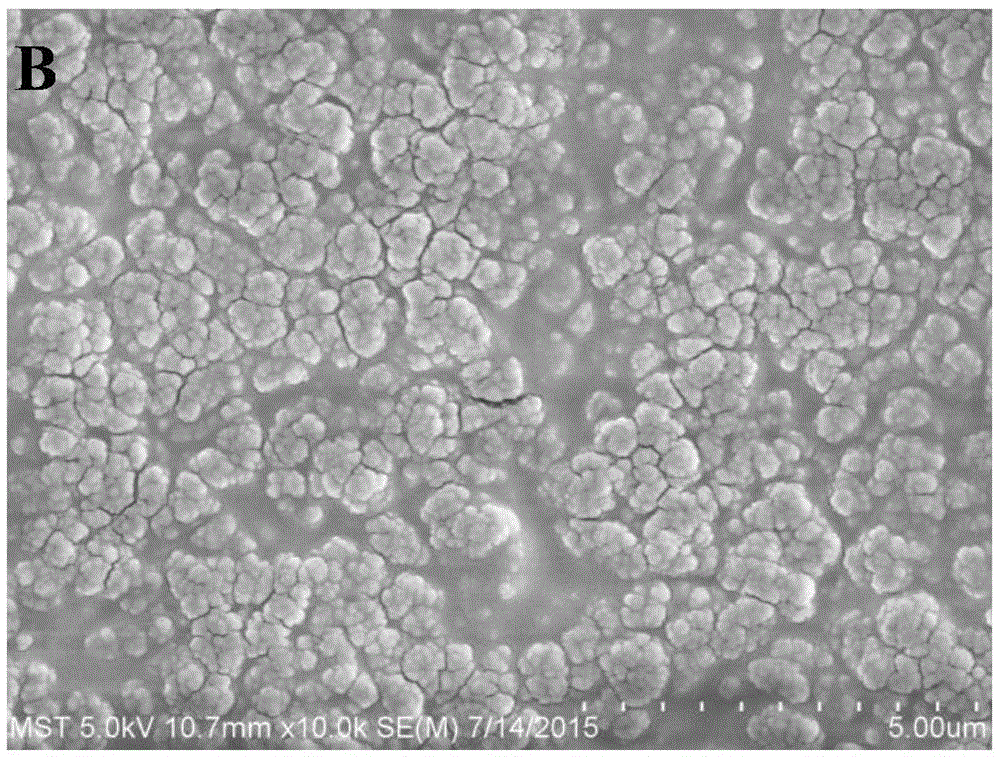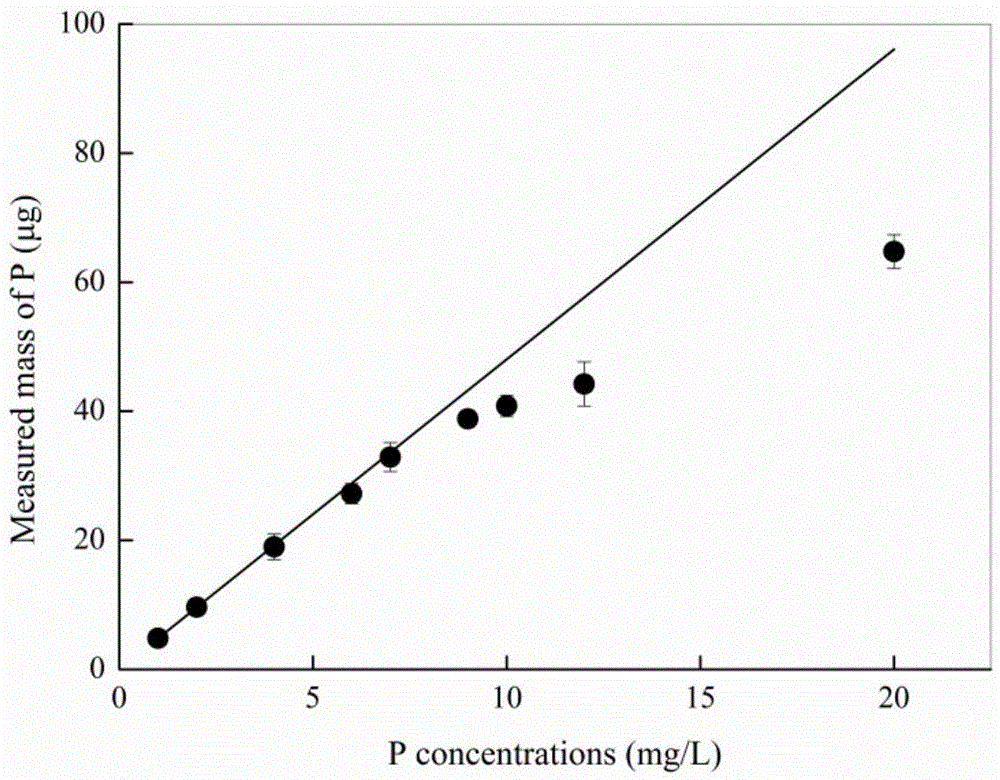Method for in-situ synchronous acquisition of two-dimensional distribution of active phosphor and dissolved oxygen in water, soil or sediment
A synchronous acquisition and two-dimensional distribution technology, applied in the fields of environmental science and earth science, can solve the problems of high detection cost and unfavorable electrode popularization, achieve high fluorescence brightness, eliminate external interference, and low cost
- Summary
- Abstract
- Description
- Claims
- Application Information
AI Technical Summary
Problems solved by technology
Method used
Image
Examples
Embodiment 1
[0040] The DGT-PO composite membrane used in the present invention to simultaneously monitor active phosphorus and dissolved oxygen in situ is prepared by the following method:
[0041] (1) Take 10mg, 10mg, 500mg of PtOEP dye, fluorescent yellow 10-GN dye and polyethylene particles respectively, dissolve in 10mL of toluene, after ultrasonic dissolution, take 200μL of the mixed solution, and use the method of 100μm scraping film to mix the The solution was uniformly coated on a transparent PET film substrate, and after drying at room temperature for 30 minutes, the fluorescent sensing layer (PO) of the composite film was formed; it was stored in a dark place away from light and sealed until use.
[0042] (2) Prepare submicron ZrO ultrafine particle slurry according to the method described by Kreuzeder, A, etc.; weigh the ultrafine particle slurry containing 8.0g ZrO, and then mix it with polyurethane hydrogel HYD4 (polyurethanehydrogel, typeD4, purchased from AdvanSource Biomate...
Embodiment 2
[0046] The fixed capacity test of DGT-PO composite membrane to phosphorus, the specific steps are as follows:
[0047] (1) Slice the prepared DGT-PO composite membrane with a circular stainless steel knife (2.0 cm in diameter) to obtain a disc, put it in deionized water, inflate it with pure nitrogen for 12 hours, remove the oxygen in the membrane, and set aside.
[0048] (2) Assemble the prepared DGT-PO composite membrane into a piston-type DGT device, and then place the assembled device in denitrogenated and ultrapure water for at least 4 hours for hydration.
[0049] (3) Put the DGT device assembled in step (2) into 8 different phosphate-containing mother solutions of 0.5-10mg / L (0.001mgP / L-20mgP / L, pH=7.0±0.2; 0.03MNaCl) , for 6h adsorption, and each group had 3 parallel samples.
[0050] (4) After the adsorption is completed, take out the DGT device, recover the composite membrane, then rinse with ultrapure water and put it into 5mL 1.0M NaOH solution for 24h to fully ex...
Embodiment 3
[0053] The influence of DGT-PO composite membrane pickling-heating pretreatment on the recovery efficiency of composite membrane immobilized phosphorus is carried out according to the following steps:
[0054] (1) After fully hydrating the DGT-PO composite membrane prepared in Example 1 for 4 hours, slice it with a stainless steel circular blade with a radius of 1 cm, and then assemble the piston-type DGT device.
[0055] (2) Put the DGT device assembled in (1) into different phosphate-containing mother liquors (pH=7.0±0.2; 0.03MNaCl)), after the adsorption is completed, the DGT-PO composite membrane in the recovered device was Pickling (0.1M dilute nitric acid) for 24 hours and water washing for 4 hours, after heating, extract with 1.0M NaOH, and the other group is directly extracted with 1.0M NaOH. Figure 4 . The results show that the recovery rate of phosphorus in the composite membrane by pickling, water washing and heating is between (96.50±0.26)% and (103.92±1.91)%, in...
PUM
| Property | Measurement | Unit |
|---|---|---|
| thickness | aaaaa | aaaaa |
| adsorption capacity | aaaaa | aaaaa |
Abstract
Description
Claims
Application Information
 Login to View More
Login to View More - R&D
- Intellectual Property
- Life Sciences
- Materials
- Tech Scout
- Unparalleled Data Quality
- Higher Quality Content
- 60% Fewer Hallucinations
Browse by: Latest US Patents, China's latest patents, Technical Efficacy Thesaurus, Application Domain, Technology Topic, Popular Technical Reports.
© 2025 PatSnap. All rights reserved.Legal|Privacy policy|Modern Slavery Act Transparency Statement|Sitemap|About US| Contact US: help@patsnap.com



